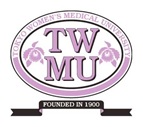Day :
- Track 3: Pharmacognosy, Pharmaceutical Chemistry and Phytochemistry
Track 4: Pharmacological Sciences
Track 5: Genetics, Genetic Engineering and Biomedical Engineering
Location: Melia Valencia Palacio De Congresos
Session Introduction
Djebbar Atmani
University of Bejaia, Algeria
Title: Effect of Fraxinus angustifolia (Oleacea) leaf and bark extracts on acute and chronic inflammation: enhanced activity of nanovesicle-trapped extracts

Biography:
Professor Djebbar Atmani has completed his Master of Science degree at California State University, Los Angeles (USA) in 1987 and his PhD at the University of Sétif (Algeria) in 2004. He is the acting Dean of the Faculty of Nature and Life Sciences, University of Bejaia (Algeria). He has published more than 15 papers in reputed journals and has been serving as reviewer of many journals.
Abstract:
In the present study, hydro alcoholic extracts of leaves and barks of Fraxinus angustifolia, a medicinal plant widely used as anti-inflammatory in folk Algerian medicine were studied using several in vitro models and on acute and chronic inflammation. In the carrageenan-induced mouse paw edema test, barks and leaves extracts (150 mg/kg) showed a marked inhibitory effect on edema. Furthermore, both extracts significantly reduced edema (66% and 81%, respectively) and subchronic inflammation (47 and 51%, respectively) induced by 12-O-tetradecanoylphorbol 13-acetate (TPA) (1 mg/ear). In addition, both extracts inhibited the activity of the pro-inflammatory enzyme, myeloperoxidase (MPO) (54% and 69%, respectively) and NO production (78 and 94%, respectively) in lipopolysaccharide (LPS)-stimulated RAW 264.7 macrophages, with no apparent toxicity. Moreover, the extracts demonstrated a considerable hypo-uricemic effect in mice, with an appreciable inhibition of xanthine oxidase activity. F. angustifolia leaf and bark extracts trapped in Nano vesicles significantly enhanced healing of TPA-induced skin lesions in mice, protected human keratinocytes against H2O2-induced oxidative damage and exhibited an outstanding antioxidant activity against DPPH and ABTS. The presence of quercetin, catechin, rutin and tannic acid in F. angustifolia extracts may account for the observed activities which justify the use of this plant in traditional medicine against pathologies associated with oxidative stress and inflammation
Hulya Özdemir
Centenary University, Van
Title: The protective effects of lepidium sativum l. (cress seed) in dmba (environmental carcinogen) applied rats

Biography:
Hulya Ozdemir has completed her PhD in Faculty of Medicine, and she is working as a Professor at the Medicine Faculty of Yuzuncu Yıl University. She’s the head of department of Pharmacology and Toxicology. She has published more than 70 papers and her research areas are mainly with plant therapy on the diabetes and cancer diseases, antioxidants and behavioural pharmacology
Abstract:
In this study ,the protective effect of the water extract of Tere Grass grows as endemic in our country and used in traditional medicine (Lepidium sativum L.) was studied on the 7,12-dimethylbenz[a]anthracene (DMBA, environmental carcinogen) treated rats. This study was created with 3 groups with 15 Wistar albino male rats in each group and it took a total of 150 working days. The rats in group 1 were named as a control group and only given a single dose of corn oil used as a solvent for DMBA in the study. Group 2 rats were orally administered carcinogenic DMBA (dissolved in corn oil) at the dose of 75 mg / kg b.w.). The rats in group 3 were orally applied with carcinogen DMBA (75 mg / kg b.w.) and water cress seed extract (20 mg / kg b.w.). At the end of 150 days, the changes in some biochemical parameters (ALT, ALP, LDH, glucose, BUN, total bilirubin, total cholesterol, total protein, albumin, triglycerides, uric acid, Na, K, Cl), antioxidant enzymes (SOD and GSH-Px) and tumor markers (CA19-9) in blood and the level of pathological tissue analysis were determined in tissue samples taken from rats. The results based on blood were found that there was a statistically significant relationship in some parameters, and this was supported by histopathology. In this study, a significant association was found between the groups in terms of renal GSH-Px, liver GSH-Px and SOD, ALP, ALT, LDH, CA19, glucose, BUN, cholesterol, Cl, total protein, albumin and uric acid levels. The plant showed positive effects on parameters such as kidney GSH-Px, liver GSH-Px, ALP, LDH, CA19, glucose, Cl, total protein, and albumin. In the pathological analysis, normal histological structure was seen in the liver of control group rats, where as severe hydropic degeneration was observed in DMBA applied rats liver and lighter hydropic degeneration in the liver of the rats in third group which were administered DMBA and water extract of Tere grass. The kidneys of the rats in the control group and the group treated with DMBA with Tere grass showed normal histological structure while a small number of hydropic degeneration of cells was seen in the DMBA applied group. At the end of study, evaluating the blood as well as tissue sample results together indicated that DMBA as an environmental carcinogen caused significant toxic symptoms in rats; whereas these symptoms were reversed when the watercress herb was administered with DMBA as a protective agent.
Monika Konaklieva
American University, USA
Title: b-Lactams cidal against Mycobacterium tuberculosis

Biography:
Monika Konaklieva is an organic synthetic/medicinal chemist, whose research focuses on the synthesis and evaluation of new antibacterial, neuroprotective and anticancer agents, as well as development of efficient and environmentally friendly synthetic approaches for their preparation. She obtained her doctoral degree in Organic Synthetic Chemistry from State University of New York at Buffalo (1997). She was a visiting Assistant Professor at the School of Pharmacy, Midwestern University, Chicago, IL (1997-1999). She is currently an Associate Professor in the Department of Chemistry, Washington, DC. In 2007, she spent her sabbatical leave at the Tuberculosis Research Section, LCID, NIAID, NIH
Abstract:
We have designed, synthesized, and tested monocyclic β-lactams that carry thiophenoxy group at C4. These thioethers have shown good intrinsic activity against serine β-lactamase producing Mycobacterium tuberculosis H37Rv (Mtb). Some of the compounds have demonstrated minimal inhibitory concentration (MIC) as low as 6.25 mg/ml in 7H9 and 1.5 mg/ml in GAST. Our investigations indicate that these compounds are cidal to both replicating and non-replicating persistent Mtb. These compounds have also shown activity against multi-drug resistant strains of M. tuberculosis. Therefore, they are promising candidates for lead discovery. Mechanism of action and target identification studies which are currently underway
Maria A. Miteva
University Paris Diderot, France
Title: In silico screening to discover inhibitors of protein-protein interactions targeting angiogenesis
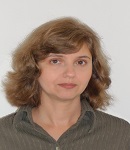
Biography:
Maria A Miteva has completed her PhD in 2000 at the Bulgarian Academy of Science. She has large experience on bioinformatics, chemoinformatics, in silico drug design and pharmacology. She is a Research Director at Insermand leads the team “Virtual screening, PPI & ADMET in silico” (MTi, Insem U973 – University Paris Diderot). She published over 80 scientific articles in peer-reviewed journals and she edited a book “In silico lead discovery“(Bentham Sci). Currently she is an appointed member of the Editorial Board of 6 international journals in the field of bioinformatics and drug design, and Associated Editor for BMC Toxicol & Pharmacol.
Abstract:
Targeting protein-protein interactions by small organic molecules is an original approach to modulate protein targets involved in different pathologies. Structure-based virtual screening can be successfully used to discover hit/lead molecules binding protein-protein interaction interfaces. We will briefly present in silico approaches allowing to efficiently modulate protein-protein interactions by small molecules, like considering protein flexibility or generating focused chemical compound libraries dedicated to inhibit protein-protein interactions. We will present small-molecule inhibitors of protein-protein interactions targeting angiogenesis discovered by in silico screening. We will focus on neuropilin-1 (NRP-1) and the vascular endothelial growth factor receptor (VEGFR-1), two important co-receptors of vascular endothelial growth factor-A (VEGF-A), increasing thus its angiogenic action in several chronic diseases including cancer. After performing structural analysis of VEGF-A binding sites of the two receptors, we performed structure-based virtual screening and similarity search computations. We identified novel promising small drug-like molecules disrupting the binding of VEGF-A to NRP-1 and to the VEGFR-1 D2 domain in the low micro molar range. Potent compounds inhibited the VEGF-induced VEGFR-1 transduction pathways. Our findings suggested that the new scaffolds can serve as a base for further development of new angiogenesis inhibitors
Yousuke Nishio
Institute For Innovation, Japan
Title: Metabolic control of the TCA cycle by the YdcI transcriptional regulator in Escherichia coli

Biography:
Yousuke Nishio is a Senior Researcher of Institute for Innovation, Ajinomoto Co., Inc. His major research field is systems biology and metabolic engineering. He finished Master degree at Department of Chemistry, Graduate School of Science and Hiroshima University in 1999, and entered Ajinomoto Co., Inc. He obtained his PhD degree from the Graduate University for Advanced Studies (SOKENDAI) in 2005. His major interest is in industrial bio-based material production using microbes.
Abstract:
Understanding the regulation and control of the expression of genes encoding metabolic enzymes is crucial for production using microbes. To overcome technical difficulties involved in identifying regulatory network systems, we designed a DNA motif finding procedure combining transcriptome and genome sequence data. Here, we used the ArcAB two-component system of Escherichia coli, which controls genes involved in the TCA cycle and energy metabolism, as a model to identify DNA motifs involved in gene-expression regulation. DNA-array data were used to extract up-regulated genes from DarcA and DarcB E. coli strains, and the upstream sequences were subjected to DNA-motif finding. Sequence similarity and conserved residues identified the known ArcA-binding motif and a novel DNA-motif candidate that was estimated to be related to YdcI, a putative LysR-type transcriptional regulator. A hypothetical YdcI-binding motif was found upstream of the gltA gene, suggesting that YdcI might control the carbon flux into the TCA cycle. To verify this, L-glutamic-acid production and citrate synthase activity in the ydcI gene-amplified strain were investigated. Our findings suggested that YdcI is a transcription factor that regulates the expression of gltA and other genes, and controls the carbon flux into the TCA cycle.
Shigeo Ohta
Nippon Medical School, Japan
Title: Molecular Hydrogen as a Novel Antioxidant: Overviews of the Advantages of Hydrogen for Medical Applications
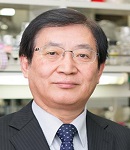
Biography:
Shigeo Ohta has completed his PhD from Tokyo University, Japan and Postdoctoral studies from Bio center, Basel University, Switzerland. He has published more than 200 papers in reputed journals and has been serving as an Associate Editor of Medical Gas Research and an Editorial Board Member of Mitochondrion. He is the president of the society for medical and biological research on molecular hydrogen.
Abstract:
Molecular hydrogen (H2) has been accepted to be an inert and non-functional molecule in our body. We overturned this concept by demonstrating that H2 reacts with strong oxidants such as hydroxyl radical and peroxynitrite inside cells, and proposed its potential for preventive and therapeutic applications. H2 has a number of advantages exhibiting extensive effects: H2 rapidly diffuses into tissues and cells, and it is mild enough neither to disturb metabolic redox reactions nor to affect signaling reactive oxygen species; therefore, there should be no or little adverse effects of H2. There are several methods to ingest or consume H2; inhaling H2 gas, drinking H2-dissolved water (H2-water), injecting H2-dissolved saline (H2-saline) and so on. The numerous publications on its biological and medical benefits revealed that H2 reduces oxidative stress not only by direct reactions with strong oxidants, but also indirectly by regulating various gene expressions. Moreover, by regulating the gene expressions, H2 functions as an anti-inflammatory and anti-apoptotic, and stimulates energy metabolism. Recently, we have shown that hydrogen inhalation during normoxic resuscitation improves neurological outcome in a rat model of cardiac arrest independently of targeted temperature management. In addition to growing evidence obtained by model animal experiments, extensive clinical examinations were performed or are under investigation. Owing to its great efficacy and lack of adverse effects, H2 has promising potential for clinical use against many diseases.
Hyun Ok Yang
Institute of Science & Technology,Korea
Title: Neuroprotective effect of modified Chungsimyeolda-Tang, a traditional Korean herbal formula, via autophagy induction in models of Parkinson’s disease
Biography:
Hyun Ok Yang has completed her PhD on Pharmacognosy at Seoul National University in 1993. After Post-doctoral study at University of Iowa, USA, she is now a principal research scientist at Natural Products Research Center in Korea Institute of Science & Technology, Republic of Korea.
Abstract:
Wei Duan
Deakin University, Auatralia
Title: Cancer stem cells targeted delivery of siRNA to overcome induced chemoresistance

Biography:
Wei Duan is graduated with a MD from Shanghai University of Chinese Medicine and obtained his PhD in Biochemistry and Molecular Biology at University of Melbourne in 1991. He is currently a Professor of cancer therapeutics at Deakin University School of Medicine in Melbourne, Australia. He has published more than 140 original research papers and review articles in peer-reviewed journals with an h-index of 30, with average citation per paper being 25. His main research interest is the application of aptamer technology in targeted cancer drug delivery and molecular imaging. His work is supported by grants from National Health and Medical Research Council in Australia and Australia-Indian Strategic Research Fund, Victoria Cancer Agency, and CASS Foundation. He serves on the Editorial Board of several scientific journals, including being the Associate Editor-in-Chief of Drug Design, Development and Therapy
Abstract:
Aptamers, also known as chemical antibodies, are short single-stranded DNA or RNA that fold into complex three-dimensional structures and bind to target molecules with high affinity and specificity. Aptamers have several advantages that offer the possibility of overcoming limitations of antibodies: they have very low immunogenicity and toxicity; they display high stability at room temperature, in extreme pH, or solvent; once selected, they can be chemically synthesized free from cell-culture-derived contaminants, and they can be manufactured at any time, in large amounts, at relatively low cost and reproducibly; they are smaller and thus can diffuse more rapidly into tissues and organs and they have lower molecular weight that can lead to faster body clearance. To improve cancer treatment outcome, the cancer stem cells must be effectively eliminated. However, with a few exceptions, most anticancer drugs currently on the market are incapable of eliminating cancer stem cells. Although the Nobel Prize-winning RNAi holds great potential as a cancer stem cell therapeutic, its translation into clinical medicine is hampered by the lack of an efficient in vivo delivery system. Based on our recently developed the world first RNA aptamers (chemical antibodies) against cancer stem cell surface marker proteins, we have developed a novel strategy using an all-RNA aptamer-siRNA chimera to target cancer stem cells in vivo. Further optimisation of this platform empowered us, for the first time, to achieve cancer stem cell-targeted delivery of siRNA in mouse xenograft tumour models of induced chemo resistance of breast cancer. This strategy can be applied to cell-targeted silencing of any disease genes in vivo. As our system is amenable to good manufacture processes with scale-up ability, the achievement will accelerate the pace of translating RNAi technology to oncology clinics and help to realise the potential of RNAi in diseases where there are currently no drugs available.
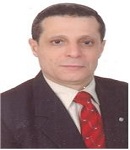
Biography:
Mahmoud Balbaa is a Professor of Biochemistry in Faculty of Science at Alexandria University, Egypt. He used to be a Head of the Department of Biochemistry at the same faculty from 2007 to 2009. He obtained his PhD degree from Hokkaido University, Japan in 1988 and worked in the field of protein phosphorylation, enzyme characterization in disease and enzyme inhibition at Faculty of Science, Alexandria University. He worked as a Professor of biochemistry in Beirut Arab University (2009 – 2014) and University of Qatar (2002–2006). In addition, he was a Postdoctoral Fellow of Hokkaido University School of Medicine and Faculty of Medicine, University of Toronto. He published more than 45 papers and serving as a Reviewer in some peer review journals. He is a Member of the Editorial Board of Biochemistry & Physiology: Open access.
Abstract:
Growth factors and their receptors are important signaling molecules, which are involved in the regulation of cell growth. There are different types of growth factors causing different responses and there are many overlapping responses from some types. Epidermal Growth Factor (EGF) stimulates the phosphorylation of the ribosomal protein S6, whereas the activation of its receptor (EGFR) is associated with metastasis, poor prognosis and chemotherapy resistance. This receptor is overexpressed in epithelial malignancies. Transforming Growth Factor Beta (TGFβ-1) is a multifunctional type involved in the regulation of growth and differentiation of both normal and transformed cells and over expressed in hepatocellular carcinoma tissues. A significantly higher serum level of EGF and TGF-β1was recently found in patients with hepatocellular carcinoma compared to their level in patients with chronic hepatitis C infection and control subjects. The levels of phosphorylated EGFR in hepatocellular carcinoma and chronic hepatitis C patients showed a highly significant difference between patients. Taken together, EGF and its phosphorylated form can be used as sensitive biomarkers for the diagnosis and prognosis of these diseases. In conclusion, various growth factors are involved in different biological processes, some of which have a clinical importance in disease.
Masami Tanaka
Keio University School of Medicine, Japan
Title: Serum total bilirubin concentration is negatively associated with increasing severity of retinopathy in patients with type 2 diabetes mellitus

Biography:
Masami Tanaka graduated from Tohoku University Medical School, obtaining a medical license. He completed his PhD from Tokyo Women’s Medical University. He worked as a Post-doctoral fellow at Vanderbilt University. He is now the Assistant Professor of Division of Endocrinology, Metabolism and Nephrology, Department of Internal Medicine, School of Medicine, Keio University. He has been serving as a Board of Councillors of the Japan Endocrine Society (JES) and as an Editorial Committee of the Journal of Japan Mibyou System Association. He is a Board Certified Endocrinologist and Certified Endocrine Educator of JES. His specialties are diabetes, endocrinology, and hypertension
Abstract:
There have been several reports demonstrating that type 2 diabetic patients with high serum total bilirubin concentration (TBC) tend to be less complicated with diabetic retinopathy. Although this observation might suggest a protective role of bilirubin against diabetic retinopathy, the precise relationship between bilirubin and retinopathy, such as the severity of retinopathy, is not known yet. Therefore, we studied the relationship between the severities of diabetic retinopathy and serum TBC. In addition, we compared the importance of bilirubin with the factors which were shown to be associated with the incidence of diabetic retinopathy in Japan. In this retrospective study, a total of 674 patients with type 2 diabetes were included. Serum TBCs were compared between patients with and without diabetic retinopathy, and according to the severity of the retinopathy univariate and multivariate analyses were conducted to investigate the relationship of retinopathy with TBC, HbA1c, systolic blood pressure, body mass index, and duration of diabetes. It was shown that serum TBC was significantly higher in patients without retinopathy than in those with retinopathy. Patients with severe retinopathy demonstrated lower TBC, higher systolic blood pressure, and longer diabetes duration. These three parameters were independent explanatory factors for diabetic retinopathy. In conclusion, TBC is lower in patients with type 2 diabetes complicated with severe retinopathy. Thus, it is probable that bilirubin plays protective roles against the onset/progression of retinopathy in patients with type 2 Diabetes mellitus. Low TBC, high blood pressure, and long diabetes duration are risk factors for diabetic retinopathy
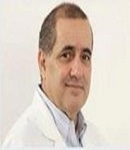
Biography:
Alfredo E Rodriguez graduated from the Córdoba University School of Medicine, Argentina at the age of 22, did his cardiology specialization in Sanatorio Guemes, Buenos Aires and has completed his PhD at 30 from the Catholic University School of Medicine. He began training in interventional cardiology at San Francisco Heart Institute, California. He was a pioneer in South America performing angioplasty in acute myocardial infarction in 1981. Currenttly he is Director of Centro de Estudios enCardiologíaIntervencionista, a premier Research Organization and Head of the Cardiology Department of Otamendi Hospital, Buenos Aires, Argentina. He has published more than 150 papers in peer review pub med Journals, he is Editor-in-chief in the Journal “Revista Argentina de Cardioangiología Intervencionista” and has been serving as an Editorial Board Member of repute Journals such as: JACC Cardiovascular Interv (2005), EuroIntervenion (2009), World Journal of cardiology etc
Abstract:
Coronary restenosis after Percutaneous Coronary Interventions (PCI) has been significantly reduced in the last decade after the introduction of Drug Eluting Stents (DES), clinically reproduced by a significant decrease of repeat revascularization procedures. However, in certain group of patients, this benefit did not translate to better clinical outcomes in the long run compared to previous Bare Metal Stents (BMS) implantation. Hard clinical endpoints, such as death, myocardial infarction or cerebrovascular accidents did not diminish as was expected, especially in the subgroup who couldn´t receive dual antiplatelet therapy for long time. While newer generations of DES and antiplatelet drugs developed, registries and Randomized Clinical Trials (RCT) with Oral Immunosuppressive Therapies (OIT) to prevent restenosis after BMS implantation demonstrated a significant improvement reducing restenosis and target vessel revascularization without increasing hard clinical end-points or serious adverse side effects. However, these investigator´s driven studies had limitations, mainly due to small sample size. Last year a meta-analysis of OIT, either with sirolimus or prednisone, was published and results were in accordance with previous data. At the same time an important RCT, Oral treatment with Rapamycin in Argentina (ORAR III), published 5 years follow-up data comparing 1st generation DES and showed promising results in favor of OIT. Actually, this strategy of OIT after BMS appears to be rational when patients had restrictions or contraindications for DES or if there are economic limitations in the health care system, and therefore it would be appropriate to include this approach as a Class IIA indication..
Mohamed A Atef
National Antivenom &Vaccine Production Center, Saudi Arabia
Title: Endotheline Receptor Blocker, A Selective And More Potent Antagonist For Atractaspis Envenomation Than The Specific Antivenom

Biography:
Abstract:
Preparation of an antivenom against Atractaspis was a very lengthy and expensive process. In this study, an alternative treatment was tested using: 1-Nitroglycerin to antagonize the coronary vasospasm induced by the venom, 2- Bosentan to block the endothelin receptors, since there is a similarity in structure and effect between the toxic fraction of the venom (Sarafotoxins) and endothelins and 3- The specific Antivenom in comparison to nitroglycerin and bosentan. Pretreatment of rabbits with nitroglycerin, antivenom or bosentan completely protected all rabbits from the minimal lethal doses of venom or its toxic fraction. On the other hand, injecting any of the three drugs a few minutes after injecting one minimal lethal dose (MLD) of the venom or the toxic fraction and at the first signs of ischemia, just before death, showed that bosentan completely saved all rabbits. In case of nitroglycerin all rabbits died and in case of antivenom, only 5 rabbits were rescued. It is clear that bosentan is superior to the specific antivenom in protecting rabbits; this may be due to its higher affinity to endothelin receptors than sarafotoxins. This preclinical study shows a good potential in using bosentan as a selective antidote for atractaspis envenomation, especially in the African continent.

Biography:
Moses S S Chow graduated from University of California and currently is Professor of Pharmacy Practice and Director of Center for Advancement of Drug Research and Evaluation (CADRE) at the College of Pharmacy, Western University of Health Sciences, Pomona, California. His previous academic appointments included Professor, University of Connecticut School of Pharmacy and Director, Chinese University of Hong Kong. He has supervised/co-supervised over 40 Masters and PhD degree students and Post-doctoral fellows. He has published as author/co-author over 300 hundred articles, book chapters, monographs in pharmacokinetic studies, translational research and development of new drugs, including Chinese medicine. He has served as a consultant to NIH and USPs as well as visiting Professor to a number of Pharmacy Schools in Asia. He has served as Board member and Secretary of the American College of Clinical Pharmacology, President of American Chinese Pharmaceutical Association and Founding President and Board member of Asian Association of Schools of Pharmacy (AASP)
Abstract:
Development of treatment strategies for resistant cancer with Chinese medicine, and prostate cancer as an example. Despite the availability of many potent anticancer drugs that can target cancer cells, great majority will acquired resistance during use, thus rendering treatment ineffective. It is well known that multiple cellular mechanisms of resistance can occur, such as decrease drug uptake, alteration of metabolism, increase efflux, modification of target, enhanced DNA repair, inactivation of apoptotic proteins and in activation of anti-apoptotic proteins. Treatment strategy of overcoming one specific mechanism of resistance at a time by the use of single compounds, e.g. inhibitors of Pgp responsible of anticancer drug efflux, has not been proven effective clinically. The reason is likely due to co-expression of other mechanisms of resistance. Thus a strategy of using herbs that contain multiple active components may be able to more effectively overcome chemo resistance by targeting multiple mechanisms. Specific examples of herbal extracts that can induce chemo sensitizing effect of the anticancer drug in resistant prostate cancer cells will be presented, based on in vitro and in vivo (xenograft model) experiments
- Track 1: Pre-formulation Studies
Track 2: Bio-Pharmaceutics
Track 7: Nanotechnology
Location: Melia Valencia Palacio De Congresos
Session Introduction
Mengmeng Wang
Pfizer, USA
Title: Skin Metabolism of Biotherapeutics as a Limiting Factor for Subcutaneous Bioavailability

Biography:
Mengmeng Wang has graduated from medical school in China, came to US and finished PhD in biochemistry and biophysics at the University of Kansas. She worked as a Post-doc on transporters in Drug Disposition department at Eli Lilly and started first job as a small molecule PK project rep. in MAP department at BMS and now is working as Principal Scientist at Pfizer PDM-NBE in the area of PK and ADME for large molecules. She has published more than 20 papers in reputed journals.
Abstract:
Peptide A is an oxyntomodulin analog with a half-life of 1 hr in rats. A Controlled Release (CR) formulation is in development in order to extend the half-life of Peptide A. In this study, in vivo and in vitro experiments were performed to understand the cause of decreased exposure after SC administration with the CR formulation. Peptide A or [125I] Peptide A was administered to rats via IV or SC route. Concentrations in plasma and tissue concentrations, including skin at injection sites were measured by LC/MS or radioactivity. In vitro skin stability study of [1251] Peptide A was conducted. After SC injection of Peptide A in CR formulation to rats, the t1/2 increased to 5 -10 hr, but the AUC decreased 50% in CR formulation compared to that after SC administration with the Instant Release (IR) formulation. In addition, the radioactivity in the skin after IR dosing dropped rapidly in the first 3 hr, but that after CR dosing remained constantly high for 72 hr, before starting to decrease in parallel with plasma concentrations. In vitro stability study demonstrated significant degradation of Peptide A in fresh skin. A major Metabolite (M1) was detected using the HPLC radiochromatography. Results from this study demonstrated that while CR formulation prolonged the systemic t1/2 of the peptide, the metabolism of the peptide in the skin during its prolonged residence could potentially offset its systemic exposure. Thus, caution needs to be taken to balance the increase of half-life and the decrease of exposure while choosing a right formulation
Yahdiana Harahap
Universitas Indonesia, Indonesia
Title: :A bioequivalence study of two azithromycin tablet formulations in indonesian healthy subjects

Biography:
Yahdiana harahap has completed her PhD at the age of 39 from Department of Pharmacy, Institute Technology Bandung, Indonesia. Now she is the Head of Biovailability and Bioequivalence laboratory Faculty of Pharmacy, Universitas Indonesia. Prior to this position, she was the Dean of Faculty of Pharmacy, Universitas Indonesia. She has published 40 papers published in both International and National Journals. She has been invited to be the speakers in many international conference, especially in the field of BA/BE and Bioanalysis technique. She currently serves as an expert at Indonesia National Agency of Drug and Food Control, spesifically in BA/BE evaluation.
Abstract:
tablets as test formulation and 500 mg Zithromax® tablets as reference formulation. Methods: A single-dosed, open-label randomized two-way crossover design under fasting period with two weeks wash-out period was evaluated in 24 subjects. For the analysis of pharmacokinetic properties, the blood samples were drawn taken up to 120 hours after dosing. Plasma concentration of azithromycin was determined using liquid chromatography – tandem mass spectrometry method with TurboIon Spray mode. Pharmacokinetic parameters AUC0-t, AUC0-∞ and Cmax were tested for bioequivalence after log-transformation of data and ratios of tmax were evaluated non-parametrically. Results: The point estimates and 90% confidence intervals (CI) for AUC0-t, AUC0-∞, and Cmax for azithromycin were 94.63% (86.27-103.81%), 95.35% (87.15-104.31%), and 94.16% (80.31-110.41%) respectively. Conclusion: These results indicated that the two formulations of Azithromycin were bioequivalent and thus may be prescribed interchangeably
Hugo Albrecht
University of South Australia, Australia
Title: Towards pharmacological validation of MAP kinase interacting kinases (MNKs) as anti-cancer drug targets

Biography:
Hugo Albrecht is a Senior Lecturer at the University of South Australia and a member of the Centre for Drug Discovery and Development within the division of Health Sciences. Prior to his appointment to the University of South Australia, he has held various positions in academic and commercial settings in Switzerland and the US, where he gained profound experience in preclinical drug discovery. From 2000-2007 he was employed at Discovery Partners International AG, Allschwil, Switzerland as Head of Research & Development. From 2007-2011 he was employed as Professor of Bioanalytics at the University of Applied Sciences Northwestern Switzerland (FHNW), Basel.
Abstract:
Cancer is a leading cause of death worldwide, and according to WHO estimates the number of new cases will increase by 70% over the next 20 years. New treatments are urgently needed. The MAP kinase interacting kinases (Mnks) have been validated as potential cancer targets using cell biology and animal models. Inhibition of Mnk activity can effectively block oncogenic transformation and tumor development. Importantly while Mnk activation is essential for tumourigenesis it is not required for normal tissue development. Pharmacological inhibition of Mnks could therefore provide a major advance in treatment strategies, a nontoxic and effective anti-cancer therapeutic agent. But to date the lack of specific Mnk inhibitors has confounded pharmacological target validation and clinical development. However, we have recently identified several potent Mnk inhibitors. In this presentation we discuss our strategy to develop specific Mnk inhibitors including the impact of these on eukaryotic translation initiation factor 4E (eIF4E), tumor cell migration and how they might be used to improve cancer treatment.
Joseph Jampilek
University of veterinary and Pharmaceutical Sciences Brno, Czech Republic
Title: Design, synthesis and investigation of aryl derivatives of alaptide as potential transdermal permeation enhancers

Biography:
Josef Jampilek completed his PhD degree in Medicinal Chemistry at the Faculty of Pharmacy of the Charles University in 2004. In 2004-2011 he worked in expert and managerial posts in the R&D Division of the pharmaceutical company Zentiva. In 2009 he became an Associate Professor of Medicinal Chemistry at the Department of Chemical Drugs at the Faculty of Pharmacy of the University of Veterinary and Pharmaceutical Sciences Brno. He is an Author/Co-author of 27 patents, more than 100 peer-reviewed scientific publications, 6 university textbooks, 10 chapters in monographs and many invited lectures. He received several awards for his scientific results
Abstract:
Alaptide, 8-methyl-6, 9-diazaspiro [4.5] decan-7, 10-dione, is an original Czech compound. Substituted piperazine-2,5-diones were designed as analogues of Melanocyte-Stimulating Hormone Release-Inhibiting Factor (MIF-1), and thus it is supposed that they are able to influence the creation and function of keratinocytes. During biological assays, it was found that alaptide demonstrated significant skin curative activity without any observed toxicity. Based on these facts and structural analogy with other transdermal Chemical Permeation Enhancers (CPEs), it was suggested to investigate alaptide as a potential CPE of many anti-inflammatory drugs, antimicrobial chemotherapeutic, sex hormones/genital system modulators or drugs of central/vegetative nervous system. Based on the excellent enhancement and skin curative effect and no toxicity of alaptide other 8-substituted derivatives were designed. New compounds were prepared by a multi-step synthetic pathway from modified amino acids and then investigated on their biological effects. All discussed 8-aryl-6, 9-diazaspiro [4.5] decan-7, 10-diones were tested for their in vitro transdermal permeation enhancement effect using a vertical Franz diffusion cell and full-thickness pig ear skin. They showed a promising enhancement effect with respect to various drug substances from different types of formulations/transdermal therapeutic systems. They also expressed no toxicity or skin irritability.
Hamdy Abdelkader
Kingston University, United Kingdom
Title: In situ gelling naltrexone hydrochloride films as a potential novel therapy for corneal healing disorders

Biography:
Hamdy Abdelkader received his PhD from the School of Pharmacy, The University of Auckland, New Zealand in 2011. His PhD topic on surfactant-based vesicles (niosomes/discomes) for ocular delivery of the opioid growth factor receptor antagonist-Naltrexone Hydrochloride, where his research led to 8 peer-reviewed articles (5 original research articles + 3 review articles), in addition, he was awarded many international conference grants to USA, Europe and Australia. Hamdy has published over 20 scientific research publications (full research papers and conference abstracts). He started a Leverhulme research fellowship at Kingston University London in early 2014 and works with Prof. Barbara Pierscionek and Prof. Raid Alany. The current focus is on developing and optimizing a novel drug therapy for age-related ocular diseases of the anterior segment of the eye.
Abstract:
Corneal ulcers are common manifestations of a number of genetic (e.g. Familial corneal hypoesthesia), systemic (e.g. diabetes) and ocular (e.g. viral, drug toxicity and surgical) diseases. The standard treatment of corneal ulcers consists of a number of components including: maximizing preservative free topical lubricants, use of topical antibiotics and protecting the corneal surface with a bandage contact lens. However, even in combination these measures may be ineffective, and the outcome is often severe sight impairment. The aim of this study was to develop, characterise and clinically evaluate NTX in situ ocular films for effective and safe treatment of impaired corneal ulcers of different origins. The films were prepared from different amorphous polymers characterized for physicochemical compatibility, moisture-sorption, surface pH, mechanical properties, sterilisability, surface morphology, mucoadhesion, tolerability and accelerated stability at 40oC/75% relative humidity for 3 months. Glycerin (GLY)-plasticized films exhibited significantly better mechanical properties, compared with polyethylene glycol (PEG) 400 and triethylcitrate (TEC)-plasticized formulations. Superior mucoadhesion was recorded for F7 and F9 plasticised with GLY and PEG 400 respectively. The stability of NTX was significantly enhanced more than 18-times, compared with the solution form. Various corneal ulcers (atheromatous, viral and traumatic ulcers) were successfully treated and healed for a period not longer than 7 days, compared with several months for conventional therapy
Patrizia Pagliara
Stanford University School of Medicine, USA
Title: Cyanobacteria are photosynthetic prokarotes

Biography:
Patrizia Pagliara has completed his PhD at the University of Salento (Italy) in 2003. Actually, she is a Researcher at the Department of Environmental and Biological Sciences and Technologies of the University of Salento. Her investigations concern the immunity defence mechanisms in invertebrates, the apoptosis process as well as the identification and characterization of novel bioactive compounds from cyanobacteria. She has published more than 40 papers on international journals
Abstract:
Cyanobacteria are photosynthetic prokaryotes actually considered one of the richest sources of bioactive compounds. They are able to produce a great variety of secondary metabolites and toxins with antibacterial, antiviral, antifungal, algicide or cytotoxic activities. Although the information about cyanobacterial bioactive compounds has been increasing over the last decades, less information are available for these species living in association with marine benthic organisms due to difficulties in their cultivation. So, the properties of a large number of cyanobacteria remained unexplored. During our study eight strains of cyanobacteria living in association with P. ficiformis were isolated, cultured under laboratory conditions and investigated for biological activities. Bioassays with human erythrocytes, Artemia salina nauplii, and Paracentrotus lividus gametes and embryos were performed. Cytotoxicity on mammalian cell lines was also investigated. A citolytic effect on human erythrocytes and a toxic activity against A. salina nauplii was observed. An antimitotic activity during sea urchin embryos development was evidenced and a disorganization of blastomeres with altered cell–cell contact was also induced. Furthermore, some of the isolated cyanobacterial strains, belonging to Leptolyngbya and Synechococcus genera, exerted a high cytotoxic activity against HeLa cells. Our data suggest to further investigate these cyanobacteria in order to better characterize their bioactive molecules and confirm that these microorganisms as good candidates for drug discovery.
Edgar Pérez-Herrero
University of Salamanca, Spain
Title: Drug nanocarriers as targeted therapies in cancer, the new chemotherapy

Biography:
Edgar Pérez Herrero is an Assistant Proffesor and Researcher at the University of Salamanca, focusing on thermal insulation by means of encapsulated phase change materials, and development of new targeted magnetic molecularly imprinted nanomedicines to improve the treatment of Multiple Myeloma. He got his PhD in Chemical Engineering from the University of Salamanca with extraordinary award for PhD Thesis. He was a visiting scientist in the University of Texas at Austin (EEUU), participating in original research on protein imprinting, with. Nicholas A Peppas, being co-author of a granted American patent. He has worked as Postdoctoral Researcher in the Principe Felipe Research Centre in Valencia with M J Vicent, specializing in conjugation processes and polymer therapeutics, and in the Pharmaceutical Technology Department at the University of Santiago de Compostela with M J Alonso, specializing in nanoparticle systems to oral peptide delivery
Abstract:
While surgery and radiotherapy are the main treatment used for local and non-metastatic cancers, anti-cancer drugs (chemotherapy, hormone and biological therapies) are the choice currently used in metastasic cancers. The indiscriminate destruction of normal cells, the toxicity of conventional chemotherapeutic drugs, as well as the development of multidrug resistance, support the need to find new effective targeted treatments based on the changes in the molecular biology of the tumor cells that block biologic transduction pathways and/or specific cancer proteins to induce the death of cancer cells by means of apoptosis and stimulation of the immune system, or specifically deliver chemotherapeutic agents to cancer cells, minimizing the undesirable side effects. Indirect targeted approaches mainly deliver chemotherapeutic agents to molecular targets overexpressed on the surface of tumor cells by cytotoxic drug carriers, like liposomes, carbon nanotubes, dendrimers, polymeric micelles, polymeric conjugates and polymeric nanoparticles, in passive and active targeted cancer therapy. These drug carriers not only transport the chemotherapeutic agents to tumors, avoiding normal tissues and reducing toxicity in the rest of the body, but also protect cytotoxic drugs from degradation, increase the half-life, payload and solubility of cytotoxic agents and reduce renal clearance. Despite the many advantages of anticancer drug carriers, only a few of them have reached the FDA approval, in contrast to the sixteen FDA approval of monoclonal antibodies. However, there are numerous clinical trials in progress of polymer-protein and polymer-drug conjugates, liposomal formulations, including immunoliposomes, polymeric micelles and polymeric nanoparticles
Mauricio de la Espriella Perdomo
Cooperative University of Colombia, Colombia
Title: Priapism associated with the use of clozapine. Case report

Biography:
Mauricio de la Espriella Perdomo is a Psychiatrist, neuropsychology and dementia specialist, master in health administration. He has led institutions and mental health clinical-surgical in Southern Colombia, with over 10 years experience in the area of mental health. He is the University lecturer and researcher in the field of psychiatry. He has published articles in specialty magazines and books related to neuroscience.
Abstract:
The use of antipsychotics is more common in medical practice. Priapism is predictable side effect of atypical antipsychotics, particularly clozapine. For a 54 year old patient with a history of schizophrenia who received 300mg day drug treatment described clozapine. The affinity of this drug by the alpha adrenergic receptor would facilitate the presence of priapism; however, clozapine has also action on muscarinic receptors and beta adrenergic so the use of beta-blockers or anticholinergics may help in the early management of priapism. There is a varied affinity between antipsychotics alpha adrenergic receptors so that the continuity of antipsychotics after an event of priapism depends on the degree of affinity to these receptors, the current clinical patient characteristics and prior treatment and risk assessment -benefit of using these drugs.
Wael M Abdel-Mageed
King Saud University, Egypt
Title: From the deepest on earth: natural products from extreme environments

Biography:
Wael M Abdel-Mageed is an Assistant Professor at Department of Pharmacognosy, College of Pharmacy, King Saud University, Riyadh, Saudi Arabia, where he has been since 2012. He also serves as an Associate Professor in the Department of Pharmacognosy, Faculty of Pharmacy, Assiut University, Assiut, Egypt, where it is his permanent address. He received a BS in Pharmaceutical Sciences from Assiut University in 1997, and a MS in Pharmaceutical Sciences (Pharmacognosy) from Assiut University in 2002. He received his PhD in Chemistry of Natural Products from the University of Aberdeen, Scotland, UK in 2009. He had a postdoctoral
Abstract:
Marine microbes are uniquely important to life as we know it. Since life most likely began in the oceans, marine microorganisms may be the closest living descendants of the original forms of life and also major pillars of the biosphere. Their metabolic diversity and capability allow them to carry out many steps in biogeochemical cycles that other organisms are unable to complete, while on the other hand they are used in a number of biotechnology applications, including the manufacture of industrial products and energy production. Marine microbes, in particular strains of Actinobacteria, are excellent sources of novel bioactive metabolites that might have pharmaceutical application. In addition to, approximately 20000 natural products have been reported from marine flora and fauna over the past 50 years and yet less than 2% of those derive from deep-water marine organisms. Although difficulty in accessing these depths has previously hindered deep-sea research, today with improved acoustic technology and greater access to submersibles, deep-sea exploration is uncovering extensive deep-water coral reefs that are home to a wealth of species on continental shelves and seamounts world-wide. Recent analyses have shown that the deep sea is one of the most biodiverse and species-rich habitats on the planet, rivalling that of coral reefs and rainforests. Dermacozines (A) and Abyssomicins (B) are rare class obtained from deep sea microbes going to be investigated in this short talk.
Antonio Drago
Aarhus University, Denmark
Title: A molecular pathway analysis informs the genetic background at risk for schizophrenia
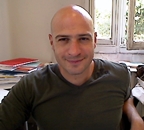
Biography:
Antonio Drago has completed his PhD from Modena University and Postdoctoral studies from Bologna University. He has published more than 45 papers in reputed journals and has been serving as an Editorial Board Member of repute.
Abstract:
Schizophrenia is a complex mental disorder marked by severely impaired thinking, delusional thoughts, hallucinations and poor emotional responsiveness. The biological mechanisms that lead to schizophrenia may be related to the genetic background of patients. A molecular pathway analysis was undertaken to identify the molecular pathways associated with schizophrenia. We collected data of genetic loci previously associated with schizophrenia, identified the genes located in those positions and created the metabolic pathways that are related to those genes' products. These pathways were tested for enrichment in a sample of schizophrenic patients and controls (4486 and 4477, respectively). The molecular pathway that resulted from the identification and analysis of all the genes located in the loci associated with schizophrenia was found to be enriched, as expected (permutated p (10(6))=9.9999e-06).We found 60 SNPs amongst 30 different genes with a strong association with schizophrenia. The genes are related to the pathways related to neurodevelopment, apoptosis, vesicle traffic, immune response and MAPK cascade. The pathway related to the toll-like receptor family seemed to play a central role in the modulation/connection of various pathways whose disruption leads to schizophrenia. This pathway is related to the innate immune system, further stressing the role of immunological-related events in increasing the risk to schizophrenia.
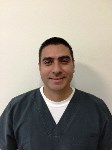
Biography:
Maximiliano Kammerer L is a nutritionist and has been working for more than 10 years at sports medicine division at Indeportes Antioquia, and as a teacher at Antioquia University in the area of sports nutrition. He has written several chapters of some books included anthropometric measures and physical activity and nutrition. He is one of the nutritionist of Colombian Olympic Committee (COC).
Abstract:
The consumption of beverages containing caffeine and taurine before exercising has been associated with increased physical and psychological performances. It is not clear the effect of every major compound in relation to the whole effect of the beverages and there is a lack in knowledge about their degree of safety for consumption. This study used a double-blind, placebo controlled, randomized, crossover design. Fourteen male soldiers performed different tests to measure their cardiorespiratory fitness, time to exhaustion, strength, power, concentration and memory after drinking 250 ml of one of the following beverages: One with 80 mg caffeine, one with 1000 mg taurine, one with 80 mg caffeine plus 1000 mg taurine, a commercial energy drink (Red Bull®) or a placebo drink. Subjects were caffeine-consumers that avoided caffeine during the day of evaluation. Differences between treatments were assessed. The mean±SD values of VO2max, maximum heart rate, time to exhaustion, right handgrip strength, left handgrip strength, vertical jump, Grid test and Digits test were 61.3±6.2 ml/kg.min, 196±6.8 beats per min, 17±1.2 min, 56.8±6.6 kgf, 53.1±5.9 kgf, 41.1±3.8 cm, 19.9±5.9 observed digits and 10.9±3.1 remembered digits after drinking a placebo drink. Comparisons among the commercial drink, caffeine, taurine, caffeine plus taurine and placebo treatments did not show statistically differences. It can be concluded that the consumption of caffeine (80 mg) and taurine (1000 mg) or their combination does not increase the physical and cognitive ability in young adults during exercise.
Michael R Shurin
University of Pittsburgh, USA
Title: Pharmacological regulation of the tumor immunoenvironment

Biography:
After graduation from Moscow State Medical School in 1984, Post graduation training in clinical Biochemistry and Clinical Immunology and obtaining his PhD degree in Immunopharmacology in 1991, He joined the Faculty of the Department of Pathology at the University of Pittsburgh Medical Center in 1991 where he is a Professor of Pathology and Immunology and an Associate Director of the Division of Clinical Immunopathology. His main research interests are in the field of the tumour microenvironment, cancer-mediated immunomodulation and dendritic cell vaccines for cancer immunotherapy. At present, his research program focuses on the immune modulating properties of chemotherapy and modulation of the tumour micro environmental elements, including dendritic cells, regulatory T cells, myeloid-derived suppressor cells and endothelial cells, as well as intratumoral cytokine network. Using a combination of immunological, molecular and gene therapeutic methodologies, He is an Author of more than hundred peer-reviewed publications and numerous reviews, an editor of several books, including “Dendritic Cell in Cancer” and “The tumour immune environment” books, an organizer of several popular international conferences on Immune-Mediated Diseases, Immunodiagnostics and Immuno monitoring and Cancer Immunotherapy. He is a Member of several grant review and editorial boards and many clinical and research societies.
Abstract:
The tumour microenvironment consist of a variable combination of tumour cells, stromal fibroblasts, endothelial cells and infiltrating leukocytes, such as macrophages, T lymphocytes, and Dendritic Cells (DC). Tumour progression is often associated with suppression or malfunction of the immune system, including the appearance of regulatory T cells and myeloid-derived suppressor cells, dysbalance of dendritic cell subsets and cytokine network, and polarization of Th1/Th2/Th3/Th17/Treg subsets and their balance. We have recently reported that antineoplastic chemotherapeutic agents could directly up-regulate development and functional activation of dendritic cells in vitro and in vivo if used in low nontoxic concentrations. Our new data revealed that low-dose nontoxic chemotherapy (or chemomodulation) increases resistance of dendritic cells to tumor-induced immunosuppression and converts suppressor dendritic cells into immunostimulatory cells. Furthermore, low-dose nontoxic chemotherapy down-regulated activity of myeloid-derived suppressor cells and regulatory T cells in the tumor microenvironment. Finally, antineoplastic chemotherapeutic agents in low, nontoxic concentrations blocked the ability of tumor cells to inhibit immune cell function. This effect was associated with increased expression of antigen-processing machinery components in tumor cells and, thus, increased immunogenicity of tumor cells. Together, these data suggest that the modulation of the tumor microenvironment by low-dose nontoxic chemotherapy – chemomodulation, - may serve as a powerful adjuvant for different immunotherapeutic modalities in cancer. In fact, application of low-dose chemotherapy prior to dendritic cell vaccines in the animal tumor models resulted in significant inhibition of primary and metastatic tumor growth in vivo. Thus, chemomodulation of the tumor environment with nontoxic doses of several common chemotherapeutic agents, including nanovehicle delivery of these agents, might target different cell populations, decrease tumor-induced immunosuppression, and improve the efficacy of modern vaccines for cancer therapy.
Alia Shatanawi
The University of Jordan, Jordan
Title: Angiotensin II increases endothelial arginase expression through a RhoA/ROCKp38 MAPK-ATF-2 pathway leading to reduced NO production

Biography:
Alia Shatanawi has completed her PhD in Pharmacology with distinction from The Medical College of Georgia at Georgia Regents University in the United States in 2011. After finishing her PhD she accepted an Assistant Professor position at the Faculty of Medicine in The University of Jordan, Amman, Jordan. She is a 2014 fellow for the UNESCO L’OREAL For Women in Science international program. She also holds a degree in dental surgery from The University of Jordan. She has published many papers and has received numerous awards and recognitions at both the regional and international levels.
Abstract:
Vascular endothelial dysfunction is a major cause of morbidity and mortality in patients with cardiovascular diseases such as hypertension, atherosclerosis and diabetes. Nitric oxide (NO) produced by endothelial nitric oxide synthase (NOS) is needed for normal vascular function. In conditions of vascular dysfunction, elevated levels of arginase can compete with NOS for available L-arginine thus reducing vascular NO production. Elevated angiotensin II (Ang II) is a key participant of endothelial dysfunction in many cardiovascular diseases and has been linked to elevated arginase activity. Our studies have explored the signaling pathway leading to increased arginase expression/activity in responses to Ang II in bovine aortic endothelial cells (BAEC). Treatment of BAEC with Ang II caused an increase in arginase activity. This was accompanied by a decrease in NO production. Our studies indicate involvement of the RhoA/ROCK-p38 mitogen activated protein kinase (MAPK) in Ang II-induced arginase upregulation and reduced NO production, as inhibitors of ROCK or p38 MAPK prevented the Ang II-induced increase in arginase activity. Additionally, treatment of BAEC with Ang II causes phosphorylation of activating transcription factor-2 (ATF-2) and enhancement of the binding of ATF-2 to arginase promoter through an AP-1 site as evident from EMSA experiments. Transfection of BAEC with ATF-2 siRNA prevents Ang II-induced increases in arginase activity/expression and maintains NO production. These results indicate that ATF-2 is necessary for enhanced expression of arginase by Ang II. Collectively, our results indicate that Ang II increases endothelial arginase activity/expression through a RhoA/ROCK-p38 MAPK-ATF-2 pathway leading to reduced NO production and endothelial dysfunction. Targeting these signaling steps might be therapeutic points for preventing vascular endothelial dysfunction associated with elevated arginase levels.

Biography:
Abdalla Omar received his PhD from Alexandria University, faculty of Pharmacy in the field of Pharmaceutical Sciences (Pharmacognosy). He had his Post-Doctoral fellow from the College of Pharmacy, The Ohio State University, USA. He held several academic and administrative positions including: Research Prof. College of Agriculture, King Saudi University (KSA), Visitor Res. Prof., Inst. of Organic Chemistry, Technical University Berlin (Germany). Visitor Prof. Arab University (Beirut). Chairman, Pharmacognosy Department, Alexandria University, General Manager, The Pharmacy Research Unit, Faculty of Pharmacy and General Manager of Medizen Pharmaceuticals, Egypt. He has published more than 60 papers in reputed journals. He has the honour of working with some great scientists in natural products as late professors Jack Beal and R Doskotsh of Ohio State University, Prof F Bohlmann of Berlin, and also has several publications with different international groups as the team of Prof. Savona and Piozzi of Italy, and Royal Danish School of Pharmacy.
Abstract:
Guava fruit tree is an important crop plant cultivated in Egypt. Guava leaf has a long history of folk medicinal uses in Egypt and worldwide as a cough sedative and as an antidiarrheal. It is also applied in the management of hypertension, obesity and in the control of diabetes mellitus in several countries. Recently it was introduced as a main ingredient in many herbal mixtures marketed in the Egyptian market and worldwide. It has been stated very often that the lack of standardization of herbal remedies and plant medicines is holding back the use of medicinal plants in the modern system of medicine, therefore a growing demand for the establishment of a system of standardization for every herbal preparation in the market is required and the buildup of a monograph containing all information required about the herbal drug is necessary. Therefore a monograph was designed on the basis set by the British Herbal Pharmacopeia in order to help in the quality control of the leaves. The monograph gave a full description of the leaf and powdered plant, summary of the activities and methods for the identification and the quality control of the raw material and the prepared extracts using physical, morphological, botanical and applying a validated HPTLC method for the quantification of Quercetin content.
Anna Szemik-Hojniak
University of Wroclaw, Poland
Title: : The behavior of trans-styryl derivatives under the UV light irradiation

Biography:
Anna Szemik-Hojniak has completed her PhD in Radiochemistry from the University of Wroclaw and Postdoctoral studies in Physical Chemistry from Solvay Foundation (Belgium), KULeuven (Belgium) and Centre of Nuclear Researches (Strasburg, France). She is experienced researcher and academic teacher and occupies with Organic Molecular Photophysics. She has published more than 45 papers in reputed scientific journals and has been serving as a reviewer of many different scientific journals. In the years (2002-2011) she served as the INWES Board director (2002-2011) for INWES corporation- operational partner of UNESCO. In 2007, at the University of Wroclaw, Poland, she organized international workshop on, “Strategies of the Highly Skilled Global Workforce”. In 2011, she was awarded with Distinguished Service Award. Presently she is INWES-ERI Board director (headquarters-Ottawa, Canada). In 2014, she organized Mini Symposium on, “Photophysics of Electron and Proton Transfer” in the framework of ICCMSE2014 conference, in Athens (Greece
Abstract:
The remarkable properties of functionalized styryl dyes as the stilben derivatives containing the variously substituted (-C6H5-CH =C) core are the subject of continuing interest. Despite that different substituents are incorporated into the aromatic rings and are allowed to obtain a numerous push-pull type donor-acceptor systems widely used in modern technologies, nonetheless, as they are also the representatives of bioactive heterocycles, they find application in various aspects of medicine and pharmacology. These molecules, on the UV light irradiation find themselves in the electronic excited state and depending on the environmental conditions their physico-chemical properties significantly change. Keeping in mind the known biological relevance of heterocyclic N-oxides that may cause apoptosis in human cells (e.g., K562 ), we decided to investigate the trans-4 - [4 '- (N, N dimethylamino-styryl)] pyridine N-oxide (DPO),2-(4-methoxy-trans-styryl)quinoline-1-oxide (MSQNO) and its hybrid complex with the ZnTPP unit.DFT and TD DFT calculations shown that in protic media, the trans-DPO system is able to form the hydrogen bonded complexes, allowing to find new applications in Biochemistry and Pharmacology. In this talk, we will discuss the charge transfer process in the excited state, the photo physical properties of these three compounds via. a vis polarity of the solvent, and differences caused by a weaker electron donor (methoxy group) substitution in MSQNO relative to [(-CH3)2N] group in DPO. A focus on theoretical aspect will be referred to a strong reference to experiment
- Track 6: Hospital Pharmacy, Drugs and Regulations
Session Introduction
Valentina Marinkovic
University of Belgrade, Serbia
Title: Comparative analysis of standard ISO 9001:2015 and Good Manufacturing Practice – continues improvement perspective

Biography:
Valentina Marinkovic has completed BSc, MSc, PhD at the Faculty of Pharmacy, University of Belgrade, Serbia. Her professional career built in two directions - academic and work in pharmaceutical industry. She published more than 150 publications in scientific and professional literature. She is Vice – president of the Untied Association for Quality in Serbia. Her current position is Regional Director of Quality for the West Balkans, with multinational company ALVOGEN. She is also Assistant Professor at University of Belgrade, Department of Social Pharmacy and Pharmaceutical Legislation.
Abstract:
The European Medicines Agency (EMA) published a guideline ICHQ10: Pharmaceutical Quality System in January 2011. ICH Q10 guidance provided an example of the pharmaceutical quality system designed to cover the entire product life cycle, to ensure more efficient and effective product realization and to manage the quality risks.The implementation of ICH Q10 has lead to the revision of Chapters1, 2 and 7 of Good Manufacturing Practice (GMP) guidelines. Additionally, pharmaceutical industries were facing the implementation of various standardized management systems by International Standardization Organization (ISO) to achieve the sustainable development dimension. At this moment, the main question that arises is how to integrate these standards. Fortunately, revision of ISO standards is in progress and similar standard elements are recognized. Draft International Standard ISO 9001:2015was issued in May 2014 and Final Draft International Standard (FDIS) is expected to be issued in May 2015. The aim of this paper was to provide a comparative analysis of the final draft of international standard ISO 9001:2015 and current GMP requirements. The above standards have been observed in terms of their similarities and disparities. Based on this analysis and considerations, the comprehensive model of Integrated Management System for pharmaceutical industry has been developed

Biography:
Dr. Tarek Kilani has completed his B.Sc. in Pharmacy, from The Jordan University of Science and Technology in Jordan. A Postgraduate Diploma in Healthcare Management & Leadership & Postgraduate Diploma in Supply Chain & Logistics from Westford School of Management. He is the Pharmacist In-Charge & Hospital Continuing Medical Education Coordinator at Emirates French Hospital Abu Dhabi – United Arab Emirates. He is Member in The International Pharmaceutical Federation (FIP), with a working experience more than 10 years utilizing his Clinical Experience in the Field of Healthcare Administration and Management in the best possible way for achieving the Highest Quality in Health Care System
Abstract:
The business of fake drugs is a lucrative crime that is increasing annually worldwide. It causes therapeutic failure, drug resistance and economic sabotage. Some of the major causes of widespread drug counterfeiting include corruption, inadequate technology for protection of the identity of genuine drugs as well it requires both local and international efforts. This presentation is aimed to provide an overview of the counterfeit medication problem examining the problem of drug counterfeiting Consequences with emphasis on the causes and possible solutions.
Madhu Anand
Dr. B.R. Ambedkar University, India
Title: Environmental exposure to persistent organochlorine pesticides and risk of breast cancer in indian females

Biography:
Madhu Anand is a Toxicologist, who has been a Postdoctoral fellow in the Department of Chemistry at Dr. B R Ambedkar University, Agra since 2011. She obtained her PhD degree from Indian Institute of Toxicology Research, Lucknow, in Life Sciences and worked in the field of environmental pollution and human health for 12 years at the Indian Institute of Toxicology Research, Lucknow and Dr B R Ambedkar University, Agra. Her recent efforts have focused on air pollution and female health. She has published more than 15 papers in reputed journal and serving as a Reviewer.
Abstract:
In India, breast cancer is the most common type of cancer among women, although the incidences are very low i.e., 19 per 100,000 compared to the United States and United Kingdom, where the incidence rates are quite higher i.e., 101 in United States and 87 in the UK. But the death per incidence ratio is highest in India is about 50%, followed by 30% in China and 18% in the United States. The etiology is remains, unknown but environmental, genetic, nutritional and hormonal factors are established as contributory risk factors. The majority of breast cancers have been proposed to be of environmental origin. Among the environmental factors organochlorine pesticide have has been suggested to play a causative role in the etiology of breast cancer. Organochlorine pesticides are widely dispersed and persist in the environment, act as xenoestrogen, get stored in adipose tissues and act as tumor promoter. Keeping all the views in mind, we have planned a multicentric study to evaluate the risk of breast cancer in different regions of India. Knowledge and awareness of breast cancer due to pollution is yet to accomplish desired goals and impact, therefore urgent intervention by the relevant bodies to educate and enlightening of the females is required.
Nadia Raeessi
University of Medical Sciences, Iran
Title: : “Coffee plus Honey†versus “topical steroid†in the treatment of Chemotherapyinduced Oral Mucositis: a randomised controlled trial

Biography:
Neda Raeessi graduated from Tehran University of Medical Sciences about one year ago as a General Practitioner (GP). Now she is working as a Medical Researcher at Atherosclerosis Research Center, Baqiyatallah University of Medical Sciences. Under supervision of the university professors, she published some papers in reputed journals. Since eight years she and a group of scientists are working on the healing effects of honey and coffee on different medical problems and published four articles in this field.
Abstract:
Background: Oral mucositis is one of the common complications of cancer chemotherapy and about 40% of the patients who take chemotherapy protocols, experience this irritating problem. The purpose of this study was to draw comparisons between the therapeutic effects of our treatment modalities (topical steroid, honey, honey plus coffee) in patients suffering from oral mucositis. Methods: This was a double blinded, randomised clinical trial of a total of 75 eligible adult participants, which they randomly fell into three treatment groups. For all the participants a syrup-like solution was prepared. Each 600 grams of the product consisted of “20 eight-mg Betamethasone solution ampoules in the Steroid (S) group, 300 grams of honey plus 20 grams of instant coffein the Honey plus Coffee (HC) group, and 300 grams of honey for the Honey (H) group. The participants were told to sip 10 ml of the prescribed product, and then swallow it every three hours for one week. Severity of lesions was clinically evaluated before the treatment and also one week after the initiation of the intervention. This study adhered to the principles of the Declaration of Helsinki and guidelines of Good Clinical Practice. Results: This study showed that all three treatment regimens reduce the severity of lesions. The best reduction in severity was achieved in HC group. H group and S group took the second and third places. In other words, honey plus coffee regimen was the most effective modality for the treatment of oral mucositis. Conclusion: Oral mucositis can be successfully treated by a combination of honey and coffee as an alternative medicine in a short time. Further investigations are warranted in this field.
Ahmad F K Alzayadi
Curtin University, Australia
Title: The stability of injectable oxytocin with respect to pH

Biography:
Ahmad F K Alzayadi has completed his Bachelor, Master in Clinical Pharmacy at Curtin University. He has almost completed his PhD studies also at Curtin University. He is a registered pharmacist, practising in the north metropolitan area of Western Australia. He is also involved in various community works through the Fadeck Cultural Centre in Western Australia.
Abstract:
Arshad mahmood
University of Innsbruck, Austria
Title: Transport of self-nanoemulsifying drug delivery system (snedds) across mucus and cellular internalization

Biography:
Abstract:
Purpose: The aim of this study was to investigate SNEDDS as a carrier system for targeted delivery of drugs and/or genes to mucosal epithelial cells. Methods: SNEDDS formulation contained 30% (m/m) Cremophor EL, 30% (m/m) Capmul MCM, 30% (m/m) Crodamol and 10% (m/m) propylene glycol. Initially droplet size and surface charge was determined to characterize the SNEDDS formulations. Mucus permeation ability of SNEDDS was investigated by the silicon tube method. Florescent microscopy was performed to establish viability of SNEDDS over Caco-2 cells using concentration gradient (0.1, 0.5 and 1.0 %). Furthermore, the interaction of SNEDDS formulation in terms of level of internalization and pathway was evaluated with Caco-2 cell monolayer (model of intestinal epithelium) cultured in 24-well plates. Results: Droplet size was observed to be 35.50 ± 8.37 nm with zeta potential approaching neutral value (-0.52 mV). Mucus permeability of 1% SNEDDS formulation evaluated with silicon tube filled with mucus demonstrated diffusion of 15.6%, 4.08% and 0.71% of the marker in initial three segments (2 mm each) after 4 h of incubation at 37oC. Cytotoxicity analysis established 0.5% SNEDDS formulation to be feasible for the cellular internalization studies. Confocal microscopy revealed that droplets of the formulation were successfully internalized in the cytoplasm of Caco-2 cells. Moreover, quantitative analysis demonstrated that 1.34% and 1.87% of fluorescein diacetate having been incorporated in SNEDDS as marker was effectively internalized after 2 h and 4 h of incubation, respectively. By using pharmacological inhibitor block method, cell internalization pathways were explored. A substantial decrease of 50.82% occurred in the presence of indomethacin (caveolae mediated pathway inhibitor) and 29.80% in the presence of chlorpromazine (clathrin pathway inhibitor)1. Conclusion: SNEDDS permeating the mucus gel layer and reaching the cytoplasm after being transported by multiple endocytosis pathways appear to be promising carrier system for mucosal epithelial delivery.
Irmak Dik
University of Selcuk, Turkey
Title: Effects of inactive parapoxvirus ovis on cytokine levels in rats

Biography:
Irmak Dik is pursuing her PhD education from Selcuk University and will complete in next year. She works as a Research Assistant in Selcuk University Faculty of Veterinary Medicine. She has published more than 8 papers in reputed journals and has been working on some project.
Abstract:
Inactive parapoxvirusovis (iPPOV) is a commercial product widely used in veterinary medicine as an immune stimulator and/or non-specific paraimmune activator for protection against various infectious diseases. The aim of this study is to determine the effects of iPPOV on pro-inflammatory and anti-inflammatory cytokine levels in rats. A total of 56 rats were used in the present study. iPPOV (1 mL/rat) was administered intra peritoneal route to all rats, except for 7 rats (Control, 0 group). Serum samples were collected from 7 rats at the 1st, 2nd, 4th, 8th, 12th, 16th and 24th hours after treatments. Serum levels of Tumor Necrosis Factor-alpha (TNF-α), Interleukin (IL)-6, IL-12 and IL-10 were determined using commercially available Enzyme Linked Immunosorbent Assay kits. Administration of iPPOV stimulated TNFα (16th and 24th hours) and IL-6 (12th, 16th and 24th hours) synthesis and caused fluctuations in IL-10 and IL-12 concentrations. In conclusion, increased cytokine levels could be attributed to immunomodulatory activity of iPPOV, however, detailed studies are required to fully understand effects of iPPOV on immune system.
Marija Mazor
Orléans University, France
Title: A potential breakthrough in osteoarthritis treatment: Alternative method for cartilage repair by mesenchymal stem cells

Biography:
Mazor M is a double Masters graduate having obtained a degree in Molecular Biology from the Faculty of Science, University of Zagreb, Croatia and in Bio Industrial Technology from the Faculty of Science, University of Orleans, France. She is currently a PhD student at the Centre for Treatment & Prevention of Osteoporosis and Arthritis at Orleans University France. She is also working as a Lecturer in Molecular Biology for the Masters in Muscular Skeletal Pathology at the Faculty of Science, Orleans University France
Abstract:
Osteoarthritis treatments such as mosaicoplasty and autologous chondrocyte implantation are frequently used but remain debatable. Mesenchymal stem cell (MSC) therapy has become the main focus of tissue engineering research to achieve functional replacement of articular cartilage. Results showed that MSC originated from bone marrow, adipose tissue, and synovial produce mostly hypertrophic cells. Purpose: Investigate whether degenerated cartilage holds viable subpopulation of MSC which has the potential to regenerate hyaline cartilage. Methods: Cells were removed and proliferated in cell culture for 3 weeks from 10 osteoarthritic tibial plateaus. The prevalence of chondrocytes, osteocytes, MSC and hypertrophic chondrocytes was studied. Differentiation capacity of cells into chondrocytes, osteocytes and adipocytes was investigated. Formation of each cell line was determined by Masson trichrome staining for bone and cartilage, HES staining and nil red staining for lipids. Tissues were histologically classified to different grades based on Mankin’s scale. Results: Following 3 weeks of cell culture, the average cell proliferation rate was up to 5 fold. Expression of the MSCs marker CD 105 showed a 6 fold increase in grade 3 and 4 compared to grade 1. MSC marker CD 166 showed only a one fold increase between these grades. Hypertrophic cartilage marker (Collagen type I) increased by 32 fold in grade 3 and 4 compared to grade 1. Cells from all grades had the capacity to form cartilage, bone and adipose tissue. Conclusion: Results indicate the presence of viable and proliferative cells with progenitor-like characteristics that may represent novel solutions to articular cartilage repair.
Joana Liberal
University of Coimbra,Portugal
Title: Molecular and Cellular Targets of polyphenols from Fragaria vesca leaf

Biography:
Joana Liberal complete her Master Degree in Molecular and Cell Biology in 2008 at University of Aveiro and is currently finishing her PhD work, in Pharmacognosy and Molecular Biology fields, at Center for Neuroscience and Cell Biology of University of Coimbra. Her research interests are focused in the evaluation of the biological properties of natural products and the underlying molecular mechanisms. She has published 10 papers to date, one provisional patent application and one book chapter.
Abstract:
Natural products have been a fertile source of novel lead molecules for drug discovery, being for long known that many plant-derived compounds have anti-inflammatory, antioxidant and anticancer activities. Fragaria vesca has been used by traditional medicine for the treatment of several diseases. In order to validate and evaluate the mechanisms involved in the activities previously reported, a hydroalcoholic extract from Fragaria vesca leaves was obtained. Using a mouse macrophage cell line we observed that the extract inhibited the production of nitric oxide (NO) triggered by lipopolysaccharide, partially due to a direct scavenging of NO. The extract also affected the cellular proteolytic pathways, through the reduction of proteasome activity and modulation of autophagic machinery, mechanisms that are therapeutic targets in cancer treatment. In order to identify the compounds responsible for these effects, the extract was further fractionated and the different fractions screened in human hepatocellular carcinoma cells (HepG2). The ellagitannin-enriched fraction (EEF) had the lower IC50 for cell viability and was then selected to pursuit the study. EEF induced cell cycle arrest at G2/M checkpoint, decreased cell proliferation and inhibited both autophagy and ubiquitin-proteasome system. Furthermore, to study the cytotoxic mechanism of EEF, an iTRAQ (isobaric tag for relative and absolute quantitation) based proteomics approach was used. Several proteins (914) were identified, among which 133 were significantly modulated, most of them related to metabolic processes. Overall, EEF decreases cell proliferation through different mechanisms involving diverse molecular targets, suggesting that Fragaria vesca could be a source of valuable molecules with anticancer potential.
Cenciarelli Orlando
University of Rome Tor Vergata, Italy
Title: From Ebola virus to Tuberculosis: emerging and re-emerging infectious diseases in the era of fast transports

Biography:
Cenciarelli Orlando is an expert in Biosecurity. He has obtained in 2010 the Master of Science degree cum Laude in Cell and Molecular Biology. In 2011, he achieved the Master of Philosophy in Protection from CBRNe events. In 2014 he complete the PhD program in Industrial Engineering. From 2010, he is employed as Research Fellow at the University of Rome Tor Vergata. From 08/2013 to 11/2014 he was Academic Guest to the ETH, Zurich (Switzerland) at the Department of Health Sciences and Technology. Since 2012, he is Lecturer in Virology (Microbiology and Clinical Microbiology area) at the Department of Biology, University of Rome Tor Vergata (Course of Study in Biotechnology). He is a member of the Directive Board of Master Courses in Protection against CBRNe events since 2013. In 2014, he was lecturer at the NATO School – Oberammergau, Germany, during the NATO Biological Warfare Defence Awareness Course
Abstract:
In the era of fast movements of human populations, mainly by air transportation but also by sea or overland, several emerging and re-emerging diseases have undergone an alarming spread: the literature reports numerous infectious diseases, mainly viral and bacterial, which have followed a rapid and unpredictable travel-associated diffusion, on a very short timescale, during the last decades. Their capability of reaching areas far from the site of the first infections involves not only affected individuals, but also potential vectors or reservoirs of the infection. The Ebola virus (an emerging virus) outbreak, which affected West Africa since the spring of 2014 represents, by size and geographical spread, an unprecedented threat to global health. The current outbreak has reached urban areas, overcoming the self-limitation that kept the spread confined to rural areas during previous outbreaks. However, also many infectious diseases known for a long time have undergone a significant recrudescence in several areas; often this is closely related to the migratory flows and to the movement of human masses, which contributes to the re-emergence of pathogens. The reduction of the impact of such infectious disease over the years might as well have led to limited controls and preventive measures, which might have contributed to their re-emergence. By exploiting some case-studies, we present the emerging and re-emerging infectious diseases analyzed under the light of their potential or effective diffusion thanks to fast transportation; we focus our attention on the strategy of precaution and prevention, also by drawing on international standards.
Ozge Korkmaza
Cumhuriyet University School of Medicine, Turkey
Title: Labetalol, Nebivolol and propranolol relax human radial artery used as coronary bypass graft

Biography:
Ozge Korkmaza is currently working as an Assistant Professor at Cumhuriyet University School of Medicine, Turkey.
Abstract:
Objective: Beta-blockers are a heterogeneous class of agents that are used in the treatment of many cardiovascular diseases, especially hypertension and atherosclerosis, and are commonly prescribed after cardiac surgery. In the present study, the aim is to investigate the vasorelaxant effects of some common beta adrenoseptor blockers on the human radial artery (RA) in vitro, as well as their relaxation mechanisms. Methods: RA rings sourced from human patients were mounted in an organ bath and tested for changes in isometric tension in relaxation response to labetalol, nebivolol and propranolol in the presence and absence of NG-nitro-L-arginine methyl ester (L-NAME, 3 x 10-5 mol/L) and tetraethyl ammonium (TEA, 3 x 10-4 mol/L). Results: The labetalol (10-8 to 10-4 mol/L), nebivolol (10-8 to 10-4 mol/L) and propranolol (10- 8 to 10-4 mol/L) induced concentration-dependent relaxations on the RA rings, which had been precontracted with phenylephrine (10-6 mol/L). The relaxation response induced by labetalol in the isolated RA rings was significantly higher when compared to the nebivolol and propranolol samples (p< 0.05). L-NAME significantly reduced the relaxation of nebivolol (p< 0.05) and TEA significantly reduced the relaxation of labetalol, nebivolol and propranolol (p < 0.05). Conclusion: We speculated that the relaxant effect of labetalol, nebivolol and propranolol was due partly to the Ca2+ -activated K+ channels. In addition, the relaxation induced by the nebivolol was largely related with nitric oxide release. Nebivolol, and partly propranolol, may provide significant therapeutic benefit, but Labetalol can be a good alternative for CABG with RA usage.
Ashraf El Metwally
King Saud bin Abdulaziz University for Health Sciences, Saudi Arabia
Title: Perception and attitude of physicians toward local generic medicines in Saudi Arabia: A questionnaire-based study

Biography:
Ashraf El Metwally is a medical doctor with a PhD in Epidemiology and Biostatistics (University of Tampere, Finland). He joined the College of Public health and Health Informatics in August 2001, while holding an honorary lecturer position at the department of Public Health- University of Aberdeen in the UK. His research interests are in the epidemiology of pain, musculoskeletal disorders and rheumatic diseases, with 15 published research papers and reports in international peer-reviewed journals. His international awards include the Young Investigator Award from the British Society of Rheumatology (2006), First Prize for The Best Submitted Paper and Presentation from the British Pain Society (2007).
Abstract:
The local market of generic medicine share in Saudi Arabia is low compared to global and regional statistics. The reason for this low market share and the role of physicians has not previously been investigated. The aim of this study was to assess health practitioners’ level of perceived knowledge and attitudes about local generic medication and identify factors that influence infrequency of generic prescriptions. A random sample of 231 physicians was recruited from two hospitals in Riyadh; the response rate was 77%. Among the 178 physicians, 76% and 47% reported that they are knowledgeable about the terms “generic” and “bioequivalence” respectively, while 44% reported that they are able to explain bioequivalence to their patients. Around 52% of physicians reported that local generics should be substituted for brands if suitable for the case, and 21.9% reported that they believe SFDA approved local generics are therapeutically equivalent to their brands. Clinical effectiveness was reported by 71.9% of physicians as the most influential factor effecting prescription of brand over local generic medication. The 3 independent significant predictors for infrequent prescription of local generics were: government sector employment OR: 3.74 [95%CI 1.50–9.43], consultant level OR: 3.94 [95%CI 1.50–10.31] and low level of knowledge about local generics OR: 4.11[95%CI 1.56–10.84]. The low market share of local generics medicines attributed to low prescription rates is significantly more among senior-level physicians working in governmental hospitals. Low level of knowledge about generic drugs among physicians was the strongest predictive factor for low prescription. Future studies are needed to confirm these results.
Sherif Salah
Cairo University, Egypt
Title: A novel approach to inhibit hiv-1 infection by actively neutralizing the antibodies of reverse transcriptase system

Biography:
Sherif Salah is awarded PhD from El-Azhar University, Cairo, Egypt in the year 2004. He holds a Master Degree from Helwan University Cairo, Egypt in the year 1998 followed by a Bachelor’s Degree from Helwan University, Cairo, Egypt in year 1991. He has extended his valuable service as an Lecturer at National Center for Radiation Research and Technology.
Abstract:
This study introduces a new approach for HIV eradication based on a new enzyme combination (reverse transcriptase and DNA polymerase) formula for inhibiting and/or preventing this disease. The pilot study was done on ten patients who were all positive for HIV antibodies, and were never treated with antiretroviral medications. Those patients were registered under surveillance by HIV/AIDS Control Department at the Egyptian Ministry of Health (MOH). All of these patients have the same clinical symptoms of HIV/AIDS and consented to take this combination therapy in the form of subcutaneous injection of 0.1 cc twice daily for 24 weeks. At the end of therapeutic protocol, all of the patients' viral loads were undetectable (less than 16 copies/ml); also there was a significant increase in their CD4 cells counts to over 500 cells/μL. According to these findings, this treatment protocol may be promising therapeutic modality for treating HIV-1 infection causing Acquired Immunodeficiency Syndrome (AIDS).

Biography:
Sílvia Storpirtis has completed PhD in Biopharmacy in 1992. She has published more than 90 scientific papers. She is a Consultant of the Brazilian Health Surveillance Agency (ANVISA) for elaboration of technical regulations for generic and similar drugs (1999-2006). She is the Member of the Bioequivalence Working Group of the Pan American Network for Drug Regulatory Harmonization (PANDRH-PAHO-WHO) between 2000 and 2006, and the Coordinator of the Pharmaceutical Equivalence and Bioequivalence Committee of the Brazilian Pharmacopoeia. She is the Member of the USP Brazil Advisory Group of the United States Pharmacopoeia and the Consultant of regulatory agencies in Peru and Colombia for supporting the implementation of BA/BE regulations
Abstract:
In Latin America, the implementation of bioequivalence (BE) studies is still unequal. There are remarkable advances, as well as there are some countries without regulations in this field. Despite of this heterogeneity it is possible to recognize efforts from the National Regulatory Agencies (NRA) in discussing bioequivalence criteria, biowaivers based on the concept of the Biopharmaceutical Classification System (BCS), therapeutical equivalence, and interchangeability issues. With this background, regulations have emerged based on in vitro and in vivo assays, but there are differences in terms of the assessment criteria and time elapsed from the application to final approval. However, since the emergence of the BCS there has been an interesting discussion regarding the possibility of including biowaivers in some cases. There is a consensus to apply a biowaiver study for solid oral dosage forms containing an active principle ingredient belonging to Class 1 of BCS (high solubility and high permeability), excluding drugs with narrow therapeutic index, but the interpretation of how to apply biowaivers based on other BCS classes differs between regulatory authorities. Considering that, the pharmaceutical market can reach USD 1,200 billion by 2016; it seems that is necessary to conciliate innovation and implementation of generic drugs. Furthermore, this implementation should be based on the best BE and biowaiver practices and criteria to improve access to safe and effective medicines at reasonable costs
Jindrich Srba
Charles University in Prague, Czech Republic
Title: Position and processing of adverse drug reactions directly submitted by patients to national regulatory authorities in European countries

Biography:
Jindrich Srba has completed his RNDr. at the age of 26 years from Charles University in Prague, Faculty of Pharmacy, Czech Republic. He performs doctoral study at Department of Social Pharmacy, Faculty of Pharmacy in Hradec Králové, Charles University in Prague, Czech Republic. He is also Drug Safety Specialist in a pharmaceutical company, where he is responsible for pharmacovigilance activities and medical issues. He has published 5 papers to date and serves as opponent to various projects applying for a grant.
Abstract:
Pharmacovigilance system is consisted of several approaches used for drug safety surveillance. Spontaneous reporting systems in European countries have been established in the second half of the 20th century. Originally, spontaneous collection of adverse drug reactions was designed for healthcare professionals and marketing authorization holders. Under-reporting is in general considered as the main weakness of spontaneous reporting system, however increase in reporting activity at national and international level throughout the years was detected. Many factors may influence spontaneous reporting activity, nevertheless legal obligation of healthcare professionals to report any ADR did not correlate with the increase of reporting activity across the European countries. In this context, direct patient reporting has been included in spontaneous reporting system at national competent authorities. The position of patient-reported outcomes of adverse events (PRO-AE) is being established in pharmacovigilance systems of the European countries. In particular, characterization of reporting activity within European countries, evaluation the positions of adverse drug reaction reports directly submitted by patients to national competent authorities, and processing of PRO-AEs itself is becoming of high importance after the legislation changes in pharmacovigilance established by European Medicine Agency in 2012. PRO-AEs are of high importance in the framework of spontaneous reporting system. Various attitudes to direct patient reporting were detected among respective national competent authorities. New issues, like medical and reporter validation, should be solved. Establishment PRO-AEs in the current spontaneous reporting systems brings both opportunities and potential complications due to specifics of patients as reporters.
Ozgen Ozer
Ege University, Turkey
Title: RSV loaded hyaluronic acid–dppc microparticles as a wound healing system

Biography:
Özgen Özer has completed her PhD and Postdoctoral studies in Faculty of Pharmacy, Ege University. She’s the head of Department of Pharmaceutical Technology and Cosmetology. She has published more than 60 papers and her research areas are mainly design and characterization of Dermal/Transdermal formulations and cosmetics (emulsion, gel, liposome, nanoparticles, vs.), stability tests, the procedures and regulations for commercialization.
Abstract:
Chronic wounds like diabetic lesions and acute injuries like burns, causing large tissue losses, are frequent and researchers try to develop novel strategies to favor wound healing. Conventional ‘topical’ approaches in dermal tissue repair are being insufficient on the problems encountered during the treatment. Resveratrol (RSV) is a powerful antioxidant that stimulates cell proliferation in the dermis by protecting from protease enzymes, by increasing the functions of fibroblasts and by increasing the synthesis of collagen. RSV was incorporated into microparticles by spray drying to treat chronic wounds such as diabetic ulcers. RSV was loaded into microparticles consisting of dipalmitoylphosphatidylcholine (DPPC) and hyaluronic acid (HA), a polysaccharide naturally present within the skin, known to contribute to the healing process. Microparticles were evaluated in terms of production yield, size distribution, encapsulation efficiency, morphology, specific surface area, thermal properties and water content. Spherical and homogenous microparticles (span≤2) in a size range between 20-30 µm were obtained with high encapsulation efficiency (≥97%). The effect of enzymes (hyaluronidase, phospholipase and lipase) on RSV release showed a dose-dependent pattern followed by a slow release stage. Cytotoxicity/proliferation and oxidative stress parameters (glutathione, oxidized glutathione, glutathione peroxidase, malondialdehyde, superoxide dismutase) obtained from human dermal fibroblast cell cultures revealed that formulations increased cell proliferation and the presence of RSV decreased oxidation in cells. RSV-loaded HA-DPPC microparticles appear as a promising formulation for wound healing due to synergistic effect of the ingredients.
Kazuo Yano
Tokyo Women’s Medical University, Japan
Title: Regulatory approval for autologous human cells and tissue products in the United States, the European Union, and Japan

Biography:
Kazuo Yano received his PhD from Cooperative Graduate School of Tokyo Women's Medical University and Waseda University. He is a Part Time Assistant Professors at both Universities. He has published 14 papers in journal and has been an international member of ISO 14155 (Global GCP Standard of Medical Device). Masayuki Yamato received his PhD from Graduate School of Arts and Sciences, University of Tokyo. He is the Director of Institute of Advanced Biomedical Engineering and Science, Tokyo Women’s Medical University. He has published more than 500 papers in journal and has been servicing as an associate editor of Regenerative Therapy.
Abstract:
Since human cells and tissue products belong to a relatively new class of medical products, limited information is available on the classification and premarket evaluation of human cells and tissue products in the United States (US), the European Union (EU), and Japan. We surveyed the definition, legislation, and approval system of a total of nine autologous human cells and tissue products in October 2013. The definition of human cells and tissue products were compatible among the US, the EU, and Japan. The products were categorized as human cells, tissue, and cellular and tissue-based products (HCT/Ps) in the US, advanced therapy medicinal products (ATMPs) in the EU, and cell/tissue-engineered products (currently regenerative therapy products) in Japan. Autologous human cells and tissue products were handled administratively as “accelerated approval of biological product”, “humanitarian device exemption (HDE) approval”, “premarket application (PMA) approval”, “biologics license application (BLA) approval”, and “new drug application approval with specific targeting of post-approval registry or surveillance”. Of nine autologous human cells and tissue products, four products had been evaluated using clinical experiences or open clinical trials with a small number of subjects, although the other products had been evaluated using comparative clinical trials with control treatment. The clinical evaluation of autologous human cells and tissue products would focus on postmarket-oriented evaluation rather than premarket-oriented evaluation. We should consider that the premarket clinical evaluations of these products need to use not only clinical experience but also historical control data, and to use adaptive licensing for approval system
Hechmi Toumi
CHR Hospital Porte Madeleine Orleans, France
Title: Hypouricemic activities of C. flammula leaf extracts in an animal model

Biography:
Hechmi Toumi graduated from the Blaise Pascal University of Clermont-Ferrand, recognized as Research Assistant at the University of Wisconsin Professor and promoted by the University of Wales (UK) and the CNU (France). He is currently Professor of Pathology of Muscular Skeleton, Director of Collegium Science and Technology at the University of Orleans, Deputy Director of the Laboratory EA4708 I3MTO and Vice President of Prevention and Research Institute of Osteoporosis.
Abstract:
The enthesis (plural: entheses) is the connective tissue between tendon or ligament and bone. There are two types of enthesis: Fibrous and fibrocartilaginous. At the former the fibrous tissue of the tendon or ligament extends all the way up to the bone, but at the latter there is a small plug of fibrocartilage at the attachment site itself. Entheses are sites of high mechanical stressing and with age normal entheses are subject to wear and tear; thus degenerative changes occur at their fibrocartilages that are similar to those seen in osteoarthritic articular cartilage. Enthesitis’ is the term used to describe inflammation at tendon, ligament or joint capsule insertions. It manifesting as pain, protracted stiffness and prominent swelling of large insertions, including those of the Achilles and patellar tendons, is characteristically seen in ankylosing spondylitis, psoriatic arthritis and reactive arthritis. Enthesitis appears generally to respond well to the anti-TNF therapies, but it is contentious as to whether or not the improvement in symptoms and signs are accompanied by a retardation of new bone formation. The term ‘enthesopathy’, however, has a wider meaning and designates all pathological abnormalities of insertions including inflammatory changes and degenerative problems. This talk covers recent clinically relevant observations in relationship to the enthesis and observations for imaging and therapy that are relevant to diagnosing and treating enthesitis.

Biography:
Rupal Patel Mansukhani earned her pharmacy degree at the Philadelphia College of Pharmacy. She completed a community practice residency at the University of Illinois in Chicago and Dominick's Pharmacy. She is a Clinical Assistant Professor at Ernest Mario School of Pharmacy/Rutgers University. Her clinical practice site is at the Morristown Medical Center. She currently works with patients prior to discharge to help with medication therapy management and the ease of transitions of care. Currently her focus is in the areas of hypertension, heart failure, anticoagulation, COPD, and Medication Therapy Management (MTM). She has multiple publications and is dedicated to advancing the practice of pharmacy.
Abstract:
With the implementation of the Affordable Care Act (ACA), more focus has been placed on coordination of care and reducing unnecessary medical costs. As a result, the Centers for Medicare and Medicaid Services (CMS) will not fully reimburse for a related diagnosis, such as myocardial infarction, chronic heart failure, or pneumonia, if readmission occurs within a 30-day period. In October 2014, Chronic Obstructive Pulmonary Disease (COPD) will be added to this list. Healthcare organizations will need to focus on improving patient outcomes and minimizing excessive health care costs. Medications are considered first line management for interventions related to COPD. Appropriate medication adherence is necessary to prevent readmissions. The existing literature has demonstrated in patients currently have problems adhering to their medication regimens. Approximately one-half of patients in the United States do not take their medications as prescribed (Sabate 2003). Pharmacists are in a unique position to help overcome many of these challenges. The effect of clinical pharmacy services on readmission rates, length of stay, and financial implications will be evaluated in patients with chronic obstructive pulmonary disease. The research project focuses on the effect of pharmacist’s interventions and the correlation of 30-day readmissions of patients with a primary or secondary diagnosis of COPD. Pharmacists and pharmacy students will provide patients with disease, drug and device education, as well as ensure drug and device access upon patient discharge. Outcomes that will be evaluated include readmission rate, length of stay, financial implications, and patient satisfaction.

